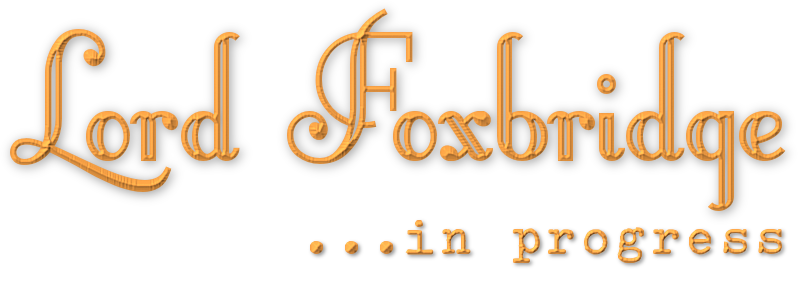Often when I'm reading British fiction, monetary amounts are
mentioned that sound peculiarly small to our modern American
consciousness, and many denominations of currency that were mentioned in the historic bulk of English literature were
obviated by the decimalization of British currency in 1971. Since I am writing about England in 1927, it behooved me to understand the currency; so I did some research (how did people write books before Google?) and can offer the following guide to the reader:
One pound sterling
(£1) in 1927 is equal to £46.60 (GBP) in 2010; and £1 GBP in 2012 (when I did this research) is
worth $1.59 American (USD); so £1 in 1927 is equal to $74.09 in 2012. Another way to look at it is converting the 1927 pound sterling to the 1927 dollar (using this calculator), and convert that to 2012 dollars (with this calculator) from there. In 1927, there were $6.28 to £1, and one 1927 dollar equals $13.29 today, so by this method £1 = $83.48. And that's just the purchase power index; there are other indices based on average wages, labor costs, standards of living, etc., that will give you much higher equivalencies (but here and here are online calculators for you).
For my own purposes, I use the nice round figure of £1=$80. Therefore, Viscount Foxbridge's million-pound inheritance from his Uncle George is equivalent to $80 million; and this is on top of his mother's fortune of more than twice that, and his American grandfather's pharmaceutical empire worth in excess of £3 million, so Foxy is an extraordinarily wealthy young man worth around $500 million of today's dollars — to be a 'millionaire' in 1920s pounds was a really big deal.
On the other hand, even in converted terms, people thought of amounts of money differently: for example, a valet in charge of a single gentleman's household, like Pond, would make about £200 a year, a rather nugatory $16,000 even with room and board included, but this was considered a very good salary. Conversely, a gentleman wouldn't think twice about betting a hundred pounds on something trivial at his club, easily dropping the equivalent of $8,000 on a single roll of dice. And in Wodehouse's stories, Bertie Wooster was always lending his friends a 'fiver' here and there, which is the equivalent of handing four hundred-dollar bills to a buddy.
For
the obsolete currencies mentioned: a guinea — which was
used to price luxury goods, land, racing purses, and certain other commodities, though it hadn't been a circulated coin since 1816 — was worth 21
shillings, being a pound-plus-a-shilling (£1.05=$84); there were twenty shillings in the pound (1s=£0.05=$4)
and twelve pence in the shilling, or 240 pence in the pound
(1d=£0.0041666=$1.67); the way pricing was done in those days can be very
confusing: something decimally priced £2.43 would be represented as two pounds,
eight shillings, and three pence (thruppence) and written as 2£/8s/3d or 2£/8/3. Remember the "10/6" card on the mad Hatter's hat? It meant the
hat cost ten shillings and sixpence — in 1865, so about fifty bucks, today (a pretty good deal for a top-hat).
Almost all denominations had a slang term, and most are now obsolete: a 'sovereign' was a
pound coin, while a 'quid' was a pound note (notes of course being paper money, 'bills' in American); a shilling was also called a 'bob' and was always a coin (though a ten-shilling note was introduced in 1928); a florin was a two-shilling coin ($8), a half-crown was a coin worth two shillings and sixpence ($10), and a crown was five shillings ($20), equaling a quarter of a pound; pence came in half-, one-, two-, three-, and six-pence coins (ha'penny, penny, tuppence, thruppence, and a 'tanner'); a farthing was the smallest coin, worth a quarter of a penny (16¢). Then there were elisions for smaller sums, such as if you paid that 10s/6d for the Hatter's hat, you'd say it was 'ten-and-six,'
Here's a great article that tells you about all the different names and values of old British currency.




Do you know where I can make a purchase for any of these?
ReplyDeleteI love this so much, it was exactly what I was looking for, thank YOU!!!!
ReplyDeleteClick here for getting Buy British pound Online
ReplyDelete Buy British Pounds Online for your travel needs or currency exchange, conveniently delivered to your doorstep. Enjoy competitive rates and hassle-free transactions.
ReplyDeleteAmazing stuff! Just a small point--there was a ten shilling note from 1914 onwards-- like the pound note, it was issued by the Treasury rather than the Bank of England until 1928, but it did exist. In 1927, it'd have been one of the most common notes around!
ReplyDelete